Last month, I posted a recipe for Butternut Squash Risotto that you can make with pretty much any vegetable puree. However, I also wanted to share a Basic Risotto Recipe that you can easily sub ingredients for whatever you have on hand. This version calls for Artichoke – but you can use mushrooms, sun dried tomatoes, asparagus – basically any leftover cooked veggies/meat/seafood that you have on hand.
As I mentioned in my last post on Risotto… I always use Arborio rice (it’s the easiest to find that works well for risotto). You want to use a high starch, medium or short grain rice to make risotto – If you use the wrong kind of rice, you will either have a mushy mess – or something dry and not creamy. Other types of rice that make an excellent risotto are Carnaroli, Maratelli, or Vialone Nano– but these may be a bit harder to find than Arborio. I usually buy Arborio rice at Cost Plus World Market or Trader Joe’s, but you can also find Italian Arborio Rice in the gourmet section of your supermarket, or in bulk bins at a health food/specialty store.
Besides using the correct rice, how does a person make the perfect risotto? There are 4 important steps: 1. Making the Soffritto, 2. Toasting the rice in fat, 3. Adding the liquid at the right times, and 4. Final finishing and resting.
1. Soffritto is the Italian version of Mirepoix – a basis for sauces and various dishes made from aromatic ingredients briefly sauteed in fat. In my recipe, I use onion and butter to make the soffritto. This helps infuse flavor into the dish – a good foundation for the risotto. You can add other sturdy aromatics to your soffritto – carrots, celery, onions, shallots, peppers – but be careful with garlic as it can sometimes burn easily.
2. Before adding broth, you want to make sure that you saute your uncooked rice grains in some fat first so that the grains become semi-translucent. It is important that each grain of rice is coated in fat and “lightly toasted” – this helps the rice absorb the broth and cook to doneness without becoming soggy or mushy. Nobody wants to eat mushy, soggy risotto!
3. It also helps to stir the risotto once in awhile with a wooden spoon. Contrary to what most people think, risotto making should not be labor intensive – you don’t have to stand over the pot stirring and stirring until you arm falls off. Just stir a few times every minute or so, and watch out for when the broth level gets low. When the broth seems mostly absorbed, run the wooden spoon across the pan and when the spoon leaves a “streak” of bare pan that slowly fills in with risotto – that’s when you know to add the next ladle of hot liquid.
4. Finally, once the risotto is done, add the final finishing ingredients (the cooked veggies, Parmesan cheese, seasonings to taste), stir, cover – then allow to rest for 2 minutes before serving! The final resting allows the risotto to “set” a little bit, and allows the flavors of your ingredients to meld together. (Some people like to beat in a bit of cold butter after the final rest to finish the dish off – I prefer not to, but you can always try it and see if you like it better that way.)
- 2 c. Arborio rice
- 2 T. unsalted butter
- 1/2 tsp. salt
- 1 medium onion, chopped
- 1 small bottle white wine (about 1 c.)
- 6 c. chicken broth
- zest of one lemon (optional)
- 1/2 c. Parmesan cheese
- 14 oz. can quartered artichoke hearts (or 4 steamed artichokes)
- salt, pepper to taste
1. To make the soffritto, melt the butter in a large saute pan. Add the chopped onions and salt, and sweat for about 5 minutes until translucent.
2. To toast the grains, add the raw rice to the soffritto mixture, and saute on low heat until the grains are partially translucent. Meanwhile, heat the chicken broth in a saucepan and turn the heat down to a very slow simmer.
3. Add the wine, and a few ladles of hot chicken broth. Stir a few times and reduce the heat to low. Let the rice slowly cook and absorb the broth. (You don’t need to stand over the pan and stir like crazy! Just give a little stir here and there, and every so often, run a wooden spoon across the bottom of the pan – when you have a “streak” that shows bare pan that slowly fills inward with risotto, that’s when you know to add the next dose of hot broth.)
4. When the broth has been absorbed, add a few more ladles of broth (to cover the rice), and continue to cook (stirring occasionally). Repeat this process until the rice has absorbed all of the broth and is cooked al dente. (If the rice is not cooked enough once you run out of broth, you can add a little bit of hot water and continue cooking.)
5. Once the rice is cooked to al dente, stir in the artichoke. You can use a full can of quartered artichoke hearts, or you can use the hearts from 4 steamed artichokes (discard the leaves or reserve for another use). I had half a can of artichoke hearts and 2 steamed artichokes – so I used a combination. If you don’t like artichokes, you can substitute sauteed mushrooms, asparagus, or other appropriate cooked vegetables.
6. Add the lemon zest and Parmesan cheese. Stir, and check the seasonings (add salt and pepper to taste if needed). I find that some people don’t like the addition of lemon zest – I prefer the extra flavor and “brightness” that the zest gives to the final dish, but if you don’t like it – you can leave it out. Then, cover with a lid, and allow to rest for 2 minutes before serving.
7. Serve immediately. Makes 4 servings.


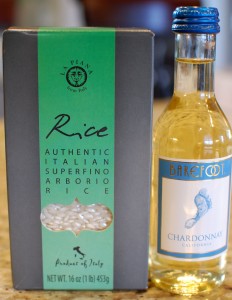
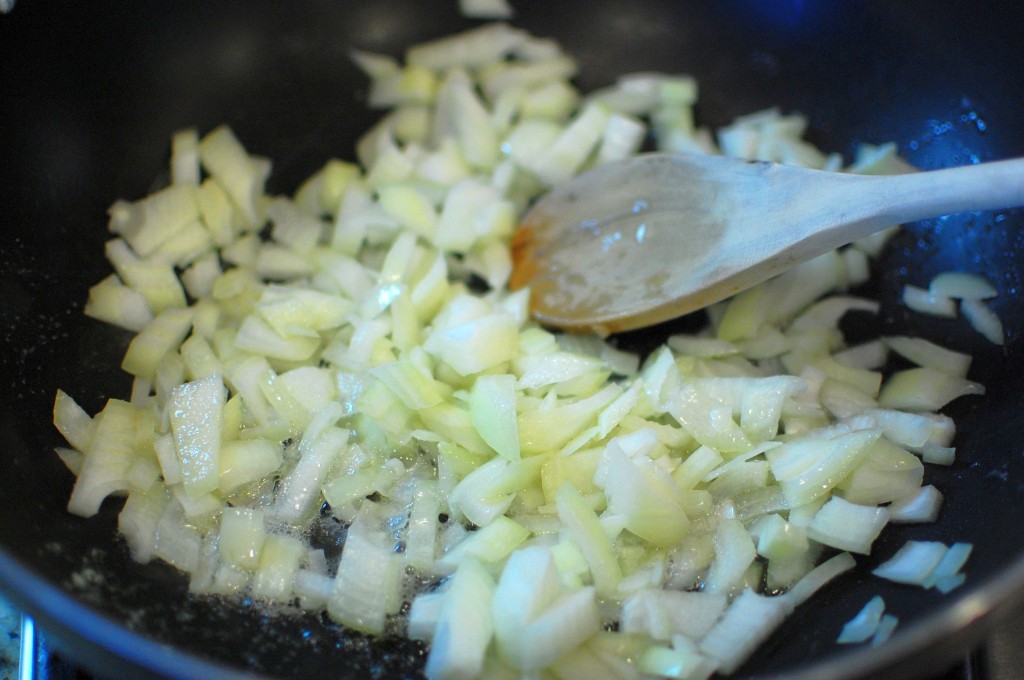
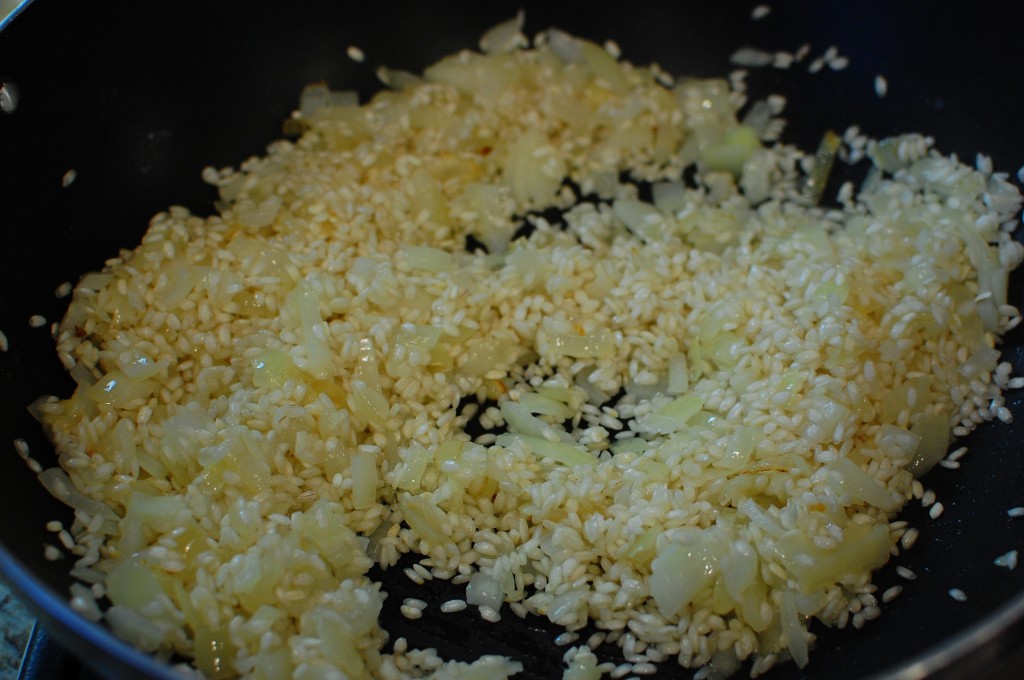
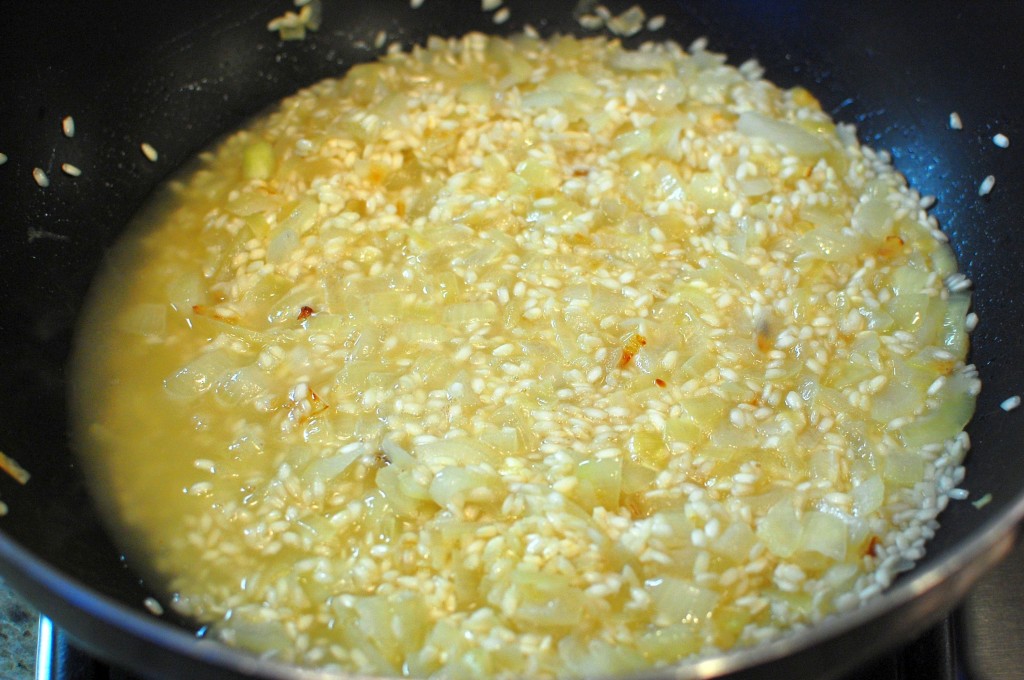
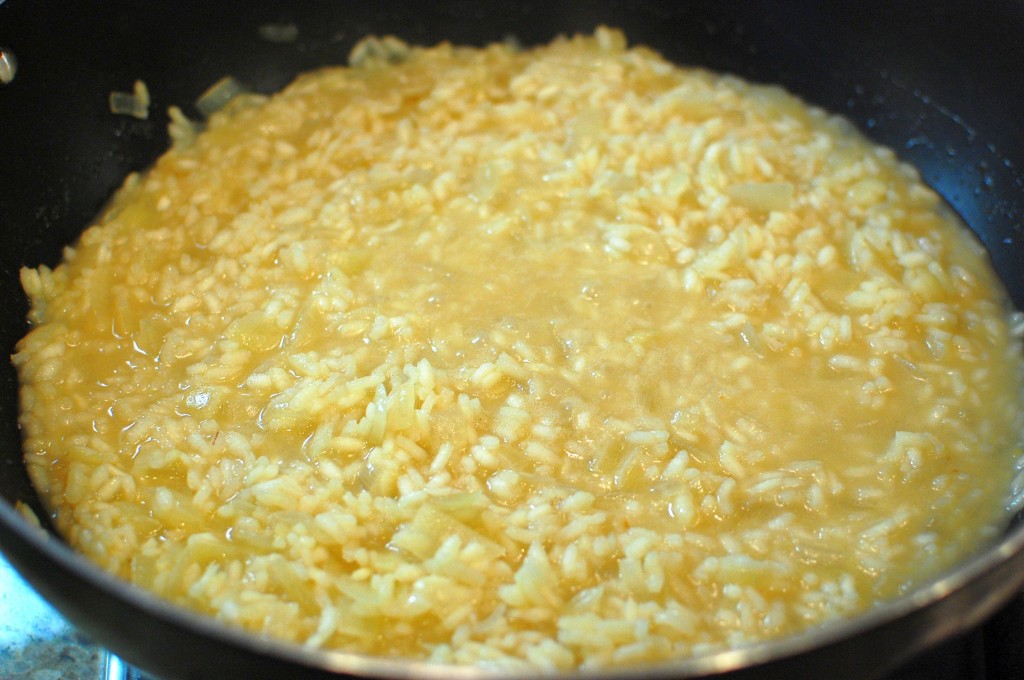
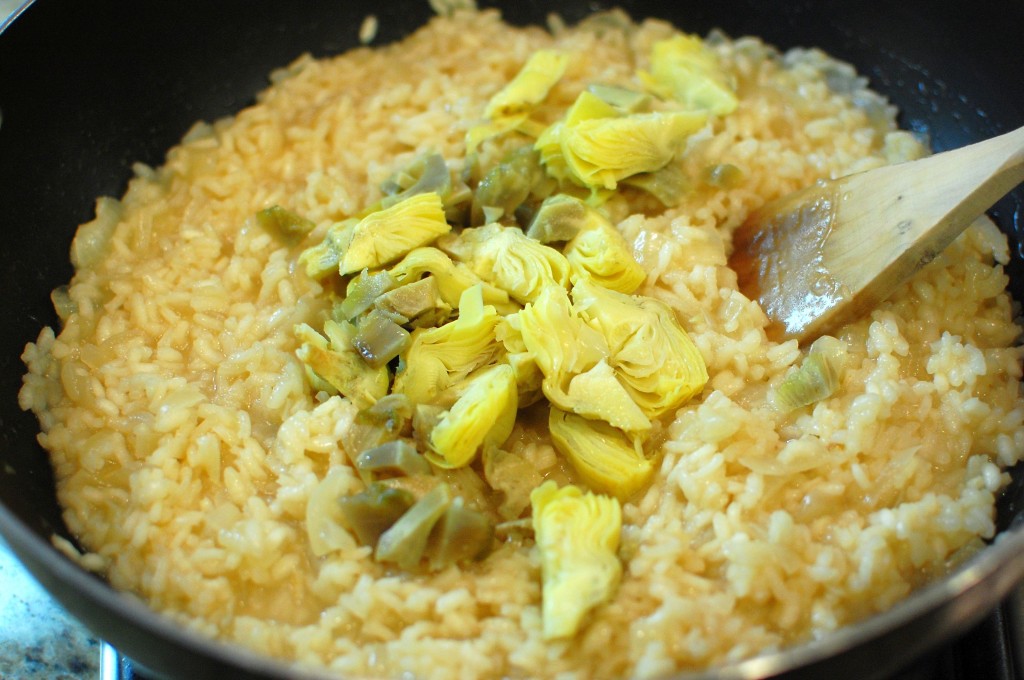
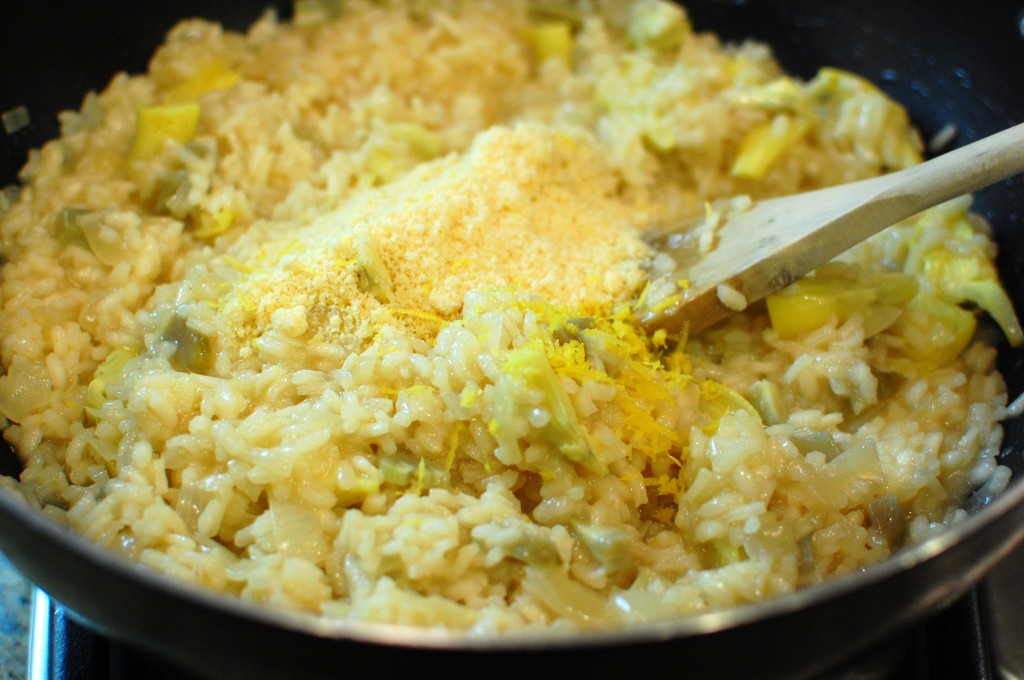



Recent Comments